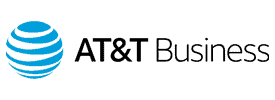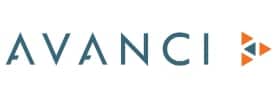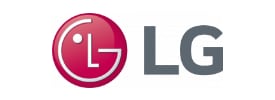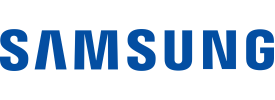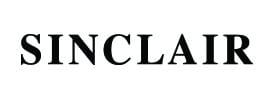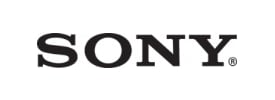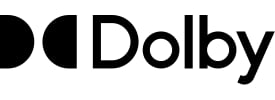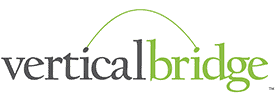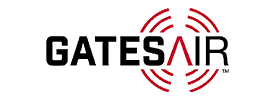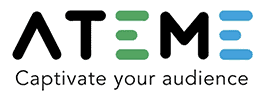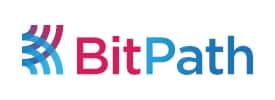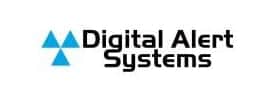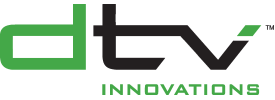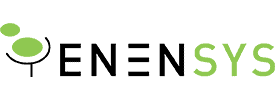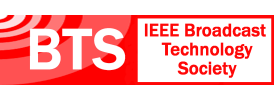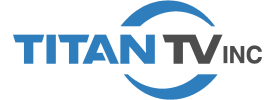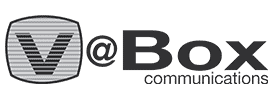- About
- Members
- Sponsors
- Subcommittees
- Technical Documents
- News
- Events
- Spotlight ATSC 3.0
- Contact Us
- Member Login
- Member Meetings
- Advanced Search
Search Site
Member Links
- About
- Members
- Sponsors
- Subcommittees
- Technical Documents
- News
- Events
- Spotlight ATSC 3.0
- Contact Us
- Member Login
- Member Meetings
- Advanced Search
President’s Memo : Longevity and Prosperity – Hallmarks of the Year of the Rabbit
Posted on February 3, 2023 in ATSC News
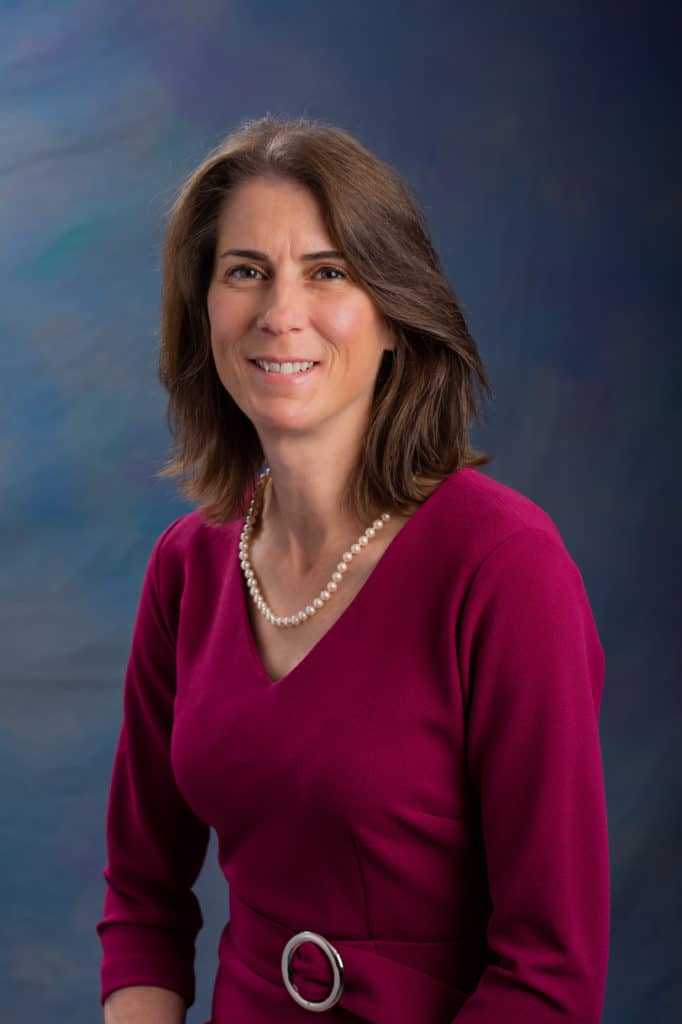
Looking back at 2022, broadcasters launched 26 new ATSC 3.0 markets– more than two per month. There is plenty of work ahead to make 2023 just as successful, with some of the most difficult markets looming ahead. We are already off to a great start with Miami lighting up services during the CES show and Boston coming quickly after that. We have also received great news out of Trinidad & Tobago as they have approved the ATSC 3.0 transition, beginning in March 2023 with an expected completion date of 2026. The Republic of Trinidad and Tobago has a population of just over 1.4 million people and is one of the richest countries in the Caribbean in terms of purchasing power.
January 22, 2023 celebrated Lunar New Year and ushered in the Year of the Rabbit. Rabbits are quick but gentle creatures, and 2023 will be a year when thoughtful action is rewarded more than huge risks. After all the difficulty and tumult of the last few years, 2023 is for cultivating peace and patience! I look forward to 2023 for many reasons including the continued thoughtful deployment of ATSC 3.0, in the U.S. and abroad, and the reward of patience as more and more consumer devices come to market.
The calendar year kicked off in traditional style with CES 2023. The show drew 115,000 attendees to Las Vegas. For those that were in the desert for the sparsely attended 2022 show, this year’s show felt like a return to “almost normal.” We enjoyed welcoming thousands of visitors to the ATSC booth in Central Hall, including FCC Commissioners Geoffrey Starks and Nathan Simington, who made the trip from Washington to Nevada to learn about ATSC 3.0 and many other innovations at this year’s CES.
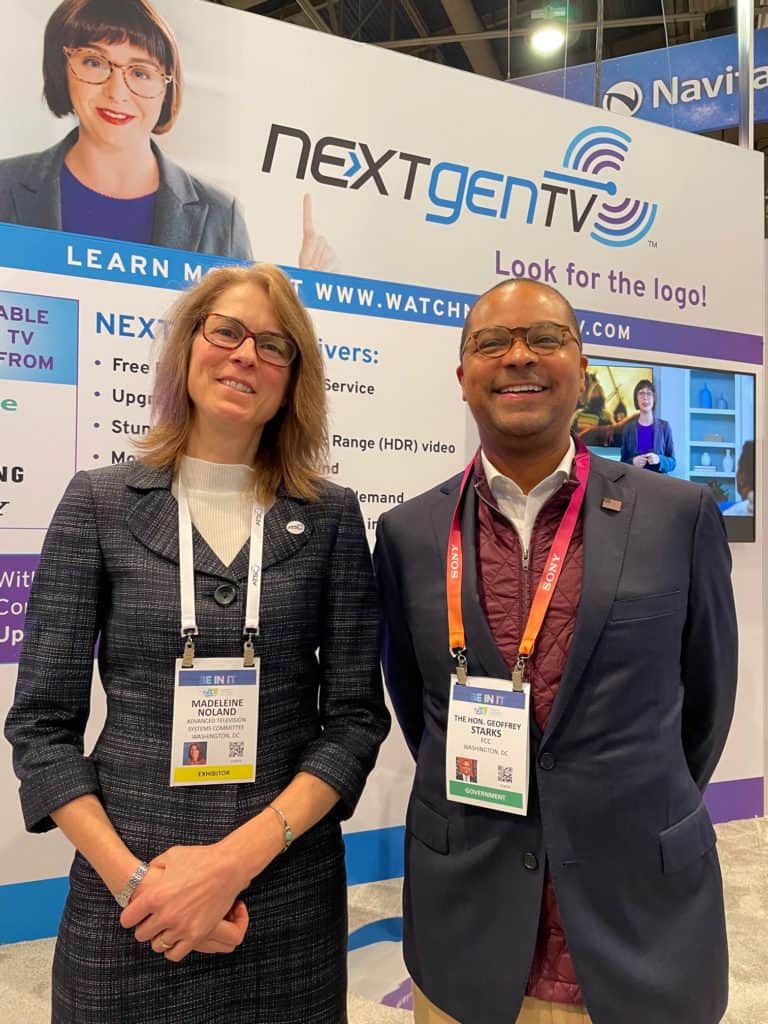
ATSC President Madeleine Noland welcomed FCC Commissioner Geoffrey Starks at CES.
The ATSC booth at CES was again the hub of all things NextGen TV. Anchored by our four Platinum Sponsors, Gaian Solutions, Hewlett Packard Enterprise (HPE), Pearl TV, and Sinclair Broadcast Group, the exhibits drew show-goers to see the latest developments in ATSC 3.0. Gaian showed the newest features in the Mobius platform, Sinclair highlighted 1.0/3.0 interactivity powered by watermarks along with audio and datacasting solutions, Pearl focused on improved audio and RUN3TV plus the new FastTrack program for device-makers, and HPE showed how the Broadcast Core Network is central to datacasting including distance education services. We were also delighted to host two Happy Hours, one sponsored by Gaian and one by HPE, which brought more visitors to the booth to learn more about the solutions and to network with one another. It was really exciting to be the “beehive” for our ATSC sponsors, members, and attendees. The booth was just buzzing with activity, old friends meeting up with each other, and new connections being made!
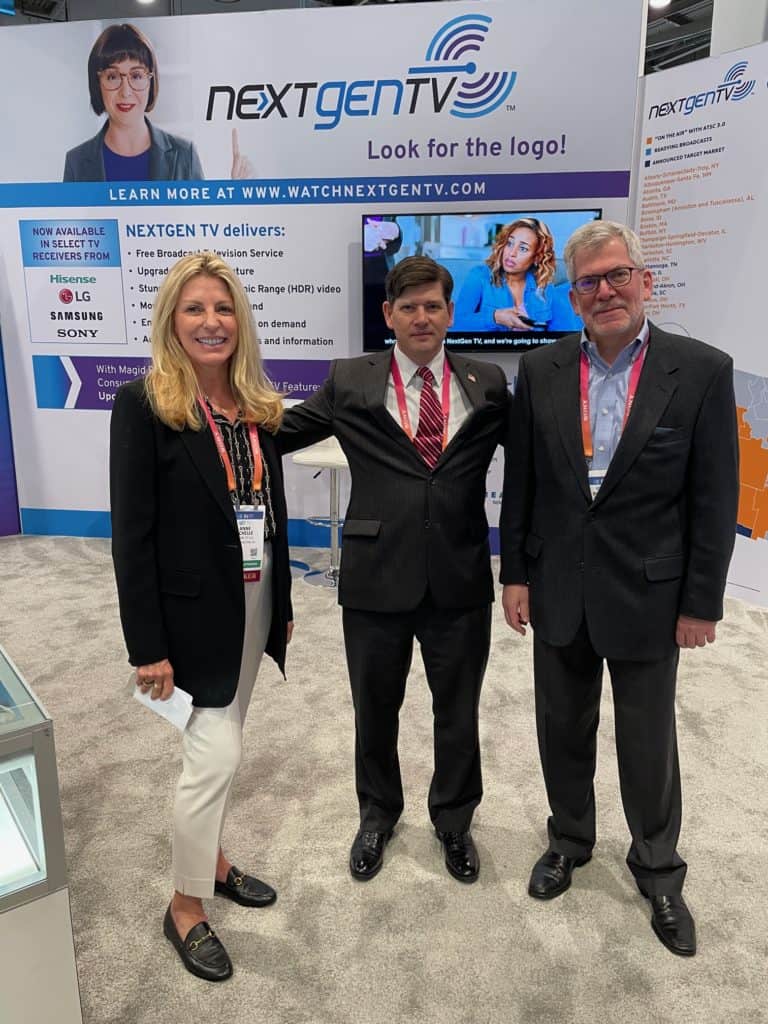
ATSC board members Anne Schelle (L) and Richard Friedel (R) flank FCC Commissioner Nathan Simington at the ATSC’s CES exhibit.
ATSC also provided a display of available or “coming soon” appliance receivers in the booth, including set-top boxes and USB receivers that are in line for earning the NEXTGEN TV logo, along with cell phone solutions including a MarkONE cell phone, USB-C receivers and a Bluetooth fob. Four of the set-top boxes were receiving an over-the-air feed and were connected to a television via HDMI, just like consumers are expected to use when they upgrade to ATSC 3.0 with accessory receivers.
I am very 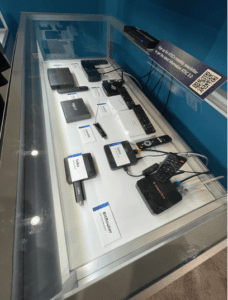 pleased that some of the receivers are available for purchase now. For example, Zapperbox offers their unit for about $250. We sometimes get questions about when prices will come down. It’s helpful to put the progress into historical perspective: the first set-top ATSC 1.0 receiver that was widely available was the RCA DTC-100, introduced in 1998 at a retail price of $700 – or the equivalent of more than $1,200 in today’s money. That means that the first ATSC 1.0 set-top boxes were five times more expensive than Zapperbox. So, one can certainly expect a similar trend with 3.0 devices, but already we are ahead of the game compared to the 1.0 rollout.
pleased that some of the receivers are available for purchase now. For example, Zapperbox offers their unit for about $250. We sometimes get questions about when prices will come down. It’s helpful to put the progress into historical perspective: the first set-top ATSC 1.0 receiver that was widely available was the RCA DTC-100, introduced in 1998 at a retail price of $700 – or the equivalent of more than $1,200 in today’s money. That means that the first ATSC 1.0 set-top boxes were five times more expensive than Zapperbox. So, one can certainly expect a similar trend with 3.0 devices, but already we are ahead of the game compared to the 1.0 rollout.
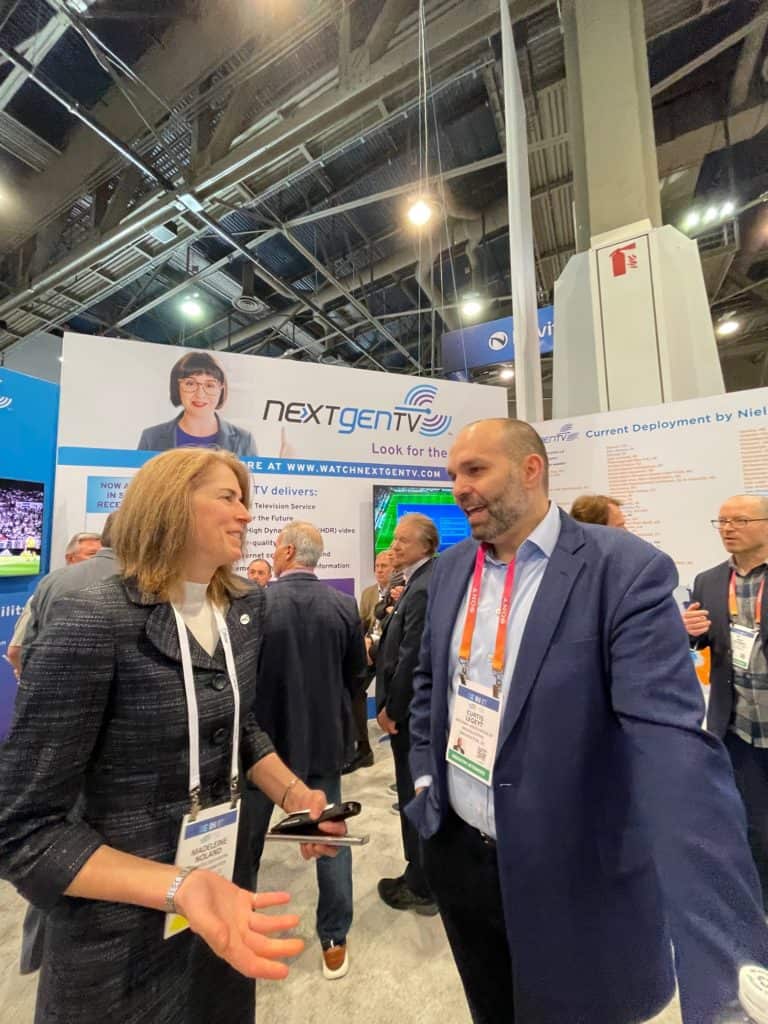
Organization leaders Madeleine Noland of ATSC and Curtis LeGeyt of the National Association of Broadcasters caught up on ATSC 3.0 progress in Las Vegas.
By all accounts, this CES saw a noticeable shift in the conversations. At past shows, a lot of people would ask basic questions about NextGen TV – what is it, what does it do, do I need an internet connection (answer: no), et cetera. This year we found that the vast majority of people already know those basics and now wanted information about what types of receivers are available, how to find them, and when NextGen would launch in their city. This development is a testament to the excellent work the industry is doing to get the word out.
The beginning of 2023 has started off quick as a rabbit and I look forward to what the new year will bring. I could not close without acknowledging the members and sponsors of ATSC for making our work possible. For that, a big “thank you!”
Madeleine Noland
Posted in ATSC News
News Categories
News Archives
Subscribe
Subscribe to The Standard, our monthly newsletter. Learn More
Join ATSC
ATSC is a membership organization with both voting and observer categories. Voting members include corporations, nonprofit organizations, and government entities, and they participate actively in the work of ATSC. Observers are individuals or entities not eligible to be a voting member.
Subscribe to our Newsletter
Subscribe to The Standard, our monthly newsletter, to stay up-to-date with ATSC news and events around the world.
Site Links
Contact Us
Advanced Television Systems Committee, Inc.
1300 I Street NW, Suite 400E
Washington, DC 20005
Do you have questions about ATSC?
About ATSC
The Advanced Television Systems Committee, Inc., is an international, non-profit organization developing voluntary standards and recommended practices for digital terrestrial broadcasting. ATSC member organizations represent the broadcast, broadcast equipment, motion picture, consumer electronics, computer, cable, satellite, and semiconductor industries. ATSC also develops digital terrestrial broadcasting implementation strategies and supports educational activities on ATSC standards.
© 2025 ATSC

